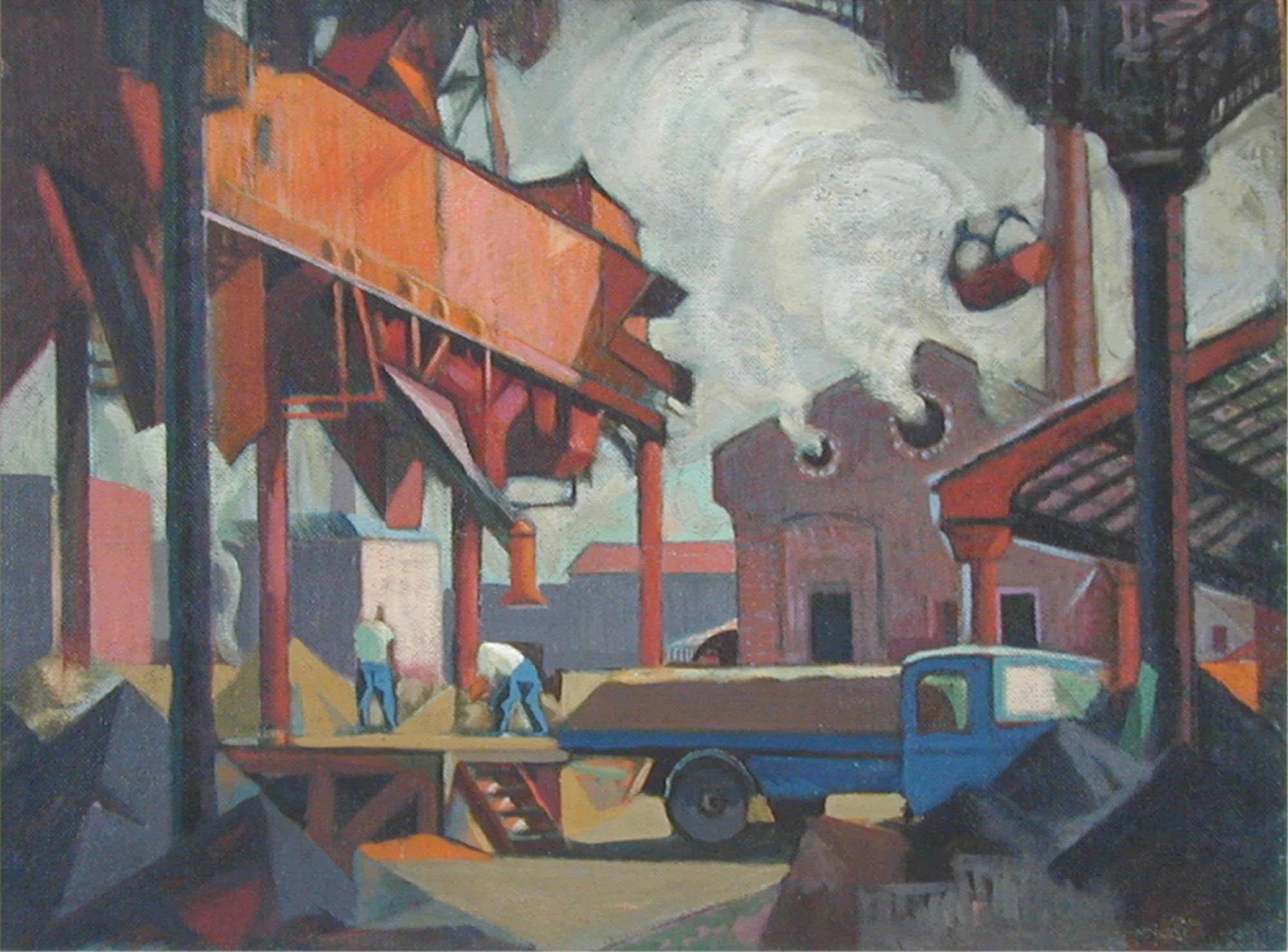Demonstrating the Importance of Art History: A Case Study from The Arts House Trust Collection
John Weeks, Winstone’s Yard, Freemans Bay, Auckland, (c.1940) Collection of The Arts House Trust
By Megan Bennett
On September 11 2025, Minister of Education Hon. Erica Stanford announced a new “future focused” secondary school subject list. While highlighting the range of new subjects on offer, the minister quietly axed Art History. This decision was made with the misguided belief that Art History does not fit within the Ministry’s future-focused vision for the curriculum.
The Arts House Trust finds this move deeply concerning. Art History is a knowledge-rich academic discipline that develops visual literacy and critical thinking skills integral to understanding our past and present, and preparing young New Zealanders for the future.
The Arts House Trust holds over 9,000 artworks spanning almost four centuries. The collection charts New Zealand’s history through the medium of visual and material culture and requires art historical skills to interpret. It is only through analysing and actively engaging with these artworks that their histories are kept alive. Without new generations of New Zealanders trained in the methods of Art History, we risk losing the messages and meanings contained in these works.
The importance of Art History and what its methods can reveal about wider social concerns is demonstrated in two works in The Arts House Trust’s collection. One was painted by John Weeks (1886-1965) in c.1940, while the other was created in 2011 by Andy Leleisi’uao.
Figure 1. John Weeks, Winstone’s Yard, Freemans Bay, Auckland, (c.1940) Collection of The Arts House Trust
Weeks’s Winstone’s Yard, Freemans Bay, Auckland (c.1940) presents a view of Freemans Bay that will appear unfamiliar to Aucklanders today [Fig.1]. It depicts the supply yard of Winstone Ltd, a construction materials supplier that was later acquired by Fletcher Challenge Building. Labourers hunch over, surrounded by mountains of sand and gravel. These anonymous workers almost disappear within the vast supply yard and its towering architecture. Weeks captures this industrial scene in geometric planes of roughly applied colour, reserving curved brushstrokes for the thick smog that obscures the sky.
Weeks depicts Freemans Bay as it once was, an industrial area home to low-income workers. However, the artist does not merely document the urban landscape. In rectangular, semi-abstracted forms, Weeks represents the regularity of manual labour; in thickly applied grey paint, he captures the realities of urban pollution; and by positioning the viewer in the shadows, peering out at the vast supply yard, he illustrates the feeling of alienation experienced by Aucklanders faced with a new, growing city.
Figure 2. New Zealand Centennial Exhibition. Special Souvenir, 1940, photolithograph, 21.2 x 28 cm, Alexander Turnbull Library, Wellington [Eph-B-EXHIBITION-1940-01-front]
Winstone’s Yard, Freemans Bay, Auckland in The Arts House Trust collection depicts an earlier Auckland now lost beneath white villas and tree-lined streets. This image, however, would have been equally unfamiliar to many of Weeks’s contemporaries. In 1940, New Zealand was celebrating its centennial. Unlike Weeks’ painting, centennial posters and souvenirs depicted idealised visions of the country’s urban centres as markers of progress. In a special souvenir from the Centennial Exhibition preserved in the Alexander Turnbull Library, pristine neighbourhoods and classicising architecture paint a triumphal picture of a young nation, obscuring the low-income communities and industrial areas that drove its development [Fig.2]. This keepsake bears no indication of the hard labour and pollution seen in Weeks’s work.
Also in the collection is Andy Leleisi’uao’s Portrait of Nimbus (2011), a work that forms an interesting parallel with Weeks’s Winstone’s Yard [Fig.3]. Leleisi’uao also comments on the lived realities of Auckland’s blue-collar workers. Through the genre of portraiture, historically reserved for an elite clientele, Leleisi’uao depicts Pacific migrant workers. In harsh shadows, he captures his sitter’s strong shoulders and stern expression, indicating a man weary from a hard day’s work. On his forehead, Leleisi’uao paints a power socket. This worker sits ready to be drained of energy, referencing the physical and emotional toll on Pacific migrant communities who fuel New Zealand’s industry while facing racial discrimination.
Figure 3. Andy Leleisi’uao, Portrait of Nimbus, 2011, acrylic on canvas, 91 x 71 cm, The Arts House Trust, Auckland
Both Weeks and Leleisi’uao communicate lived experiences in Auckland’s industrial centres, once in Freemans Bay but now moved to South Auckland. Furthermore, through visual language, they depict the physical and emotional toll of Auckland’s growth on blue-collar workers, a voice under-represented in other forms of media. Using visual analysis, students can read these artworks and draw meaningful comparisons between the social contexts of Auckland in c.1940 and in 2011.
Secondary school students enrolled in Art History are taught to unpack further meaning using visual analysis while engaging with wider contexts. As is demonstrated here, these analytical thinking skills foster more nuanced understandings of New Zealand’s history and contemporary issues.
In Aotearoa, Art History is uniquely important for engaging with Māori history and culture. Visual literacy unlocks the Māori creation stories and whakapapa communicated through the art of whakairo.
As students learn in Art History, art documents the world through diverse perspectives, offers a medium for social commentary, connects people and forges collective identities, and communicates across national, cultural, economic, and linguistic divides.
Throughout history, art has been used to propel change and challenge the status quo. It has the unique ability to amplify stories that run counter to dominant narratives. The power of art, however, relies on a diverse public armed with the skills to interpret its meaning. In a modern democracy, it is imperative that we protect access to this visual language.
The Arts House Trust calls on Erica Stanford and the Ministry of Education to urgently reconsider their decision to remove Art History from the New Zealand Secondary School Curriculum. It is crucial that future generations retain the ability not only to read visual imagery, but also to critically analyse its meanings and intentions.





